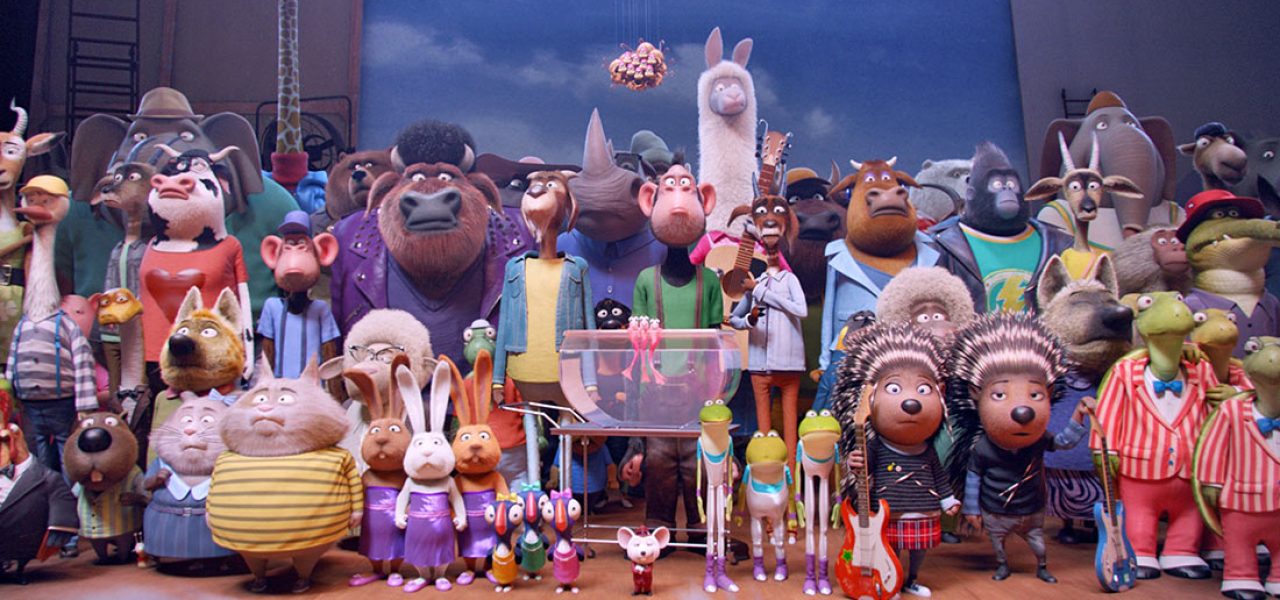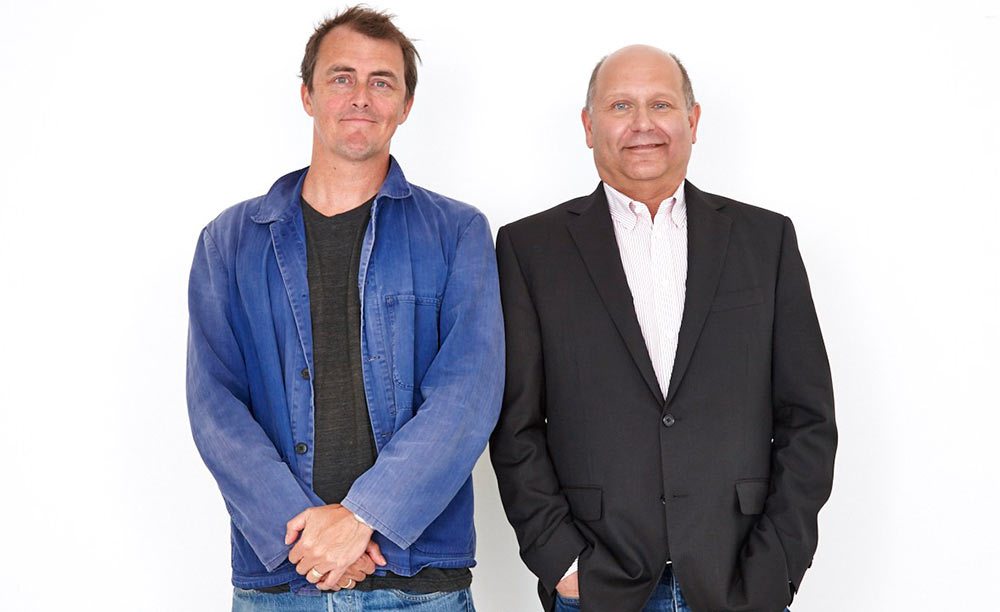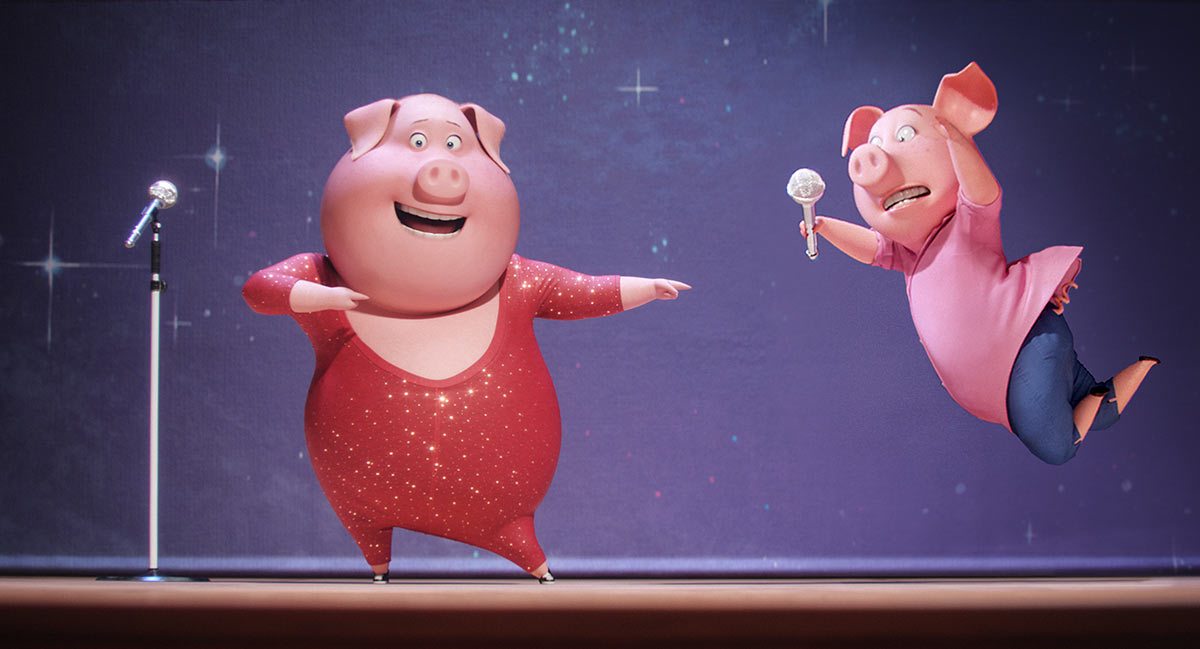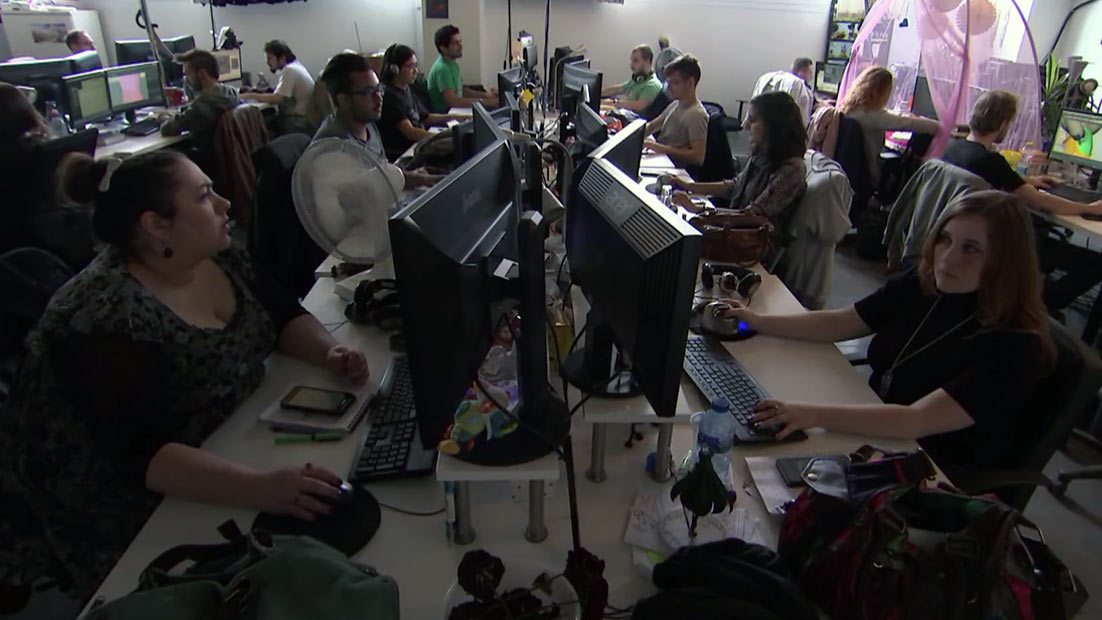

INTERVIEW: ‘Sing’ Director Garth Jennings Jumps Headfirst into Animation
Garth Jennings, a director of music videos and the quirky live-action indie Son of Rambow, might not seem like the most obvious choice to direct an animated feature, but don’t tell that to Illumination founder and CEO Chris Meledandri. “I had a hunch that Garth’s sensibility would be a perfect fit for this idea that’s preoccupied me,” said Melendandri, who hand-picked Jennings to direct his company’s seventh release.
The result, the toe-tapping Sing, was released into U.S theaters this week, and if early returns are any indication, Illumination has yet another hit on its hands. For good reason, too: Sing is one of the year’s most enjoyable animated movies, with a cast of immensely fun characters and an authentic storytelling voice.
Cartoon Brew spoke to Jennings about the challenges of being a first-time feature animation director, the fast-paced feature animation pipeline, and how his experience as a music video director came in handy on Sing.
CARTOON BREW: The idea for Sing came from Illumination head Chris Meledandri. How formed was the idea when Chris brought it to you? For example, was there a koala as the main character when he pitched it to you?
GARTH JENNINGS: The start was a very short conversation about a music competition and animals, and we both loved the idea of following multiple storylines and seeing the characters evolve. That was very clear from the start, and we got excited about using that drama. But no, Buster Moon [the koala lead] and the theater came later as we realized when we were developing the story that we wanted to detach the story from a tv show and make it more of a theatrical piece and a character piece—not a spoof of a regular tv talent show.
The kind of movie we wanted it to feel like was The Commitments, where you have music that becomes a way of escape for the characters. But out of that I started working on designing characters, in terms of their story, their personality, and then Chris and I took it from there.

How did you choose what animals to use for each character. You have the porcupine as a prickly teen, a shy elephant—these seem like such obvious choices, but I don’t imagine they were that obvious when you were working out the story. How did you figure all that out?
GARTH JENNINGS: Lots of it came quite naturally only because we weren’t trying to take animal characteristics. Otherwise, you would never use a koala to run a theater because a koala is a very slow moving creature. It was more about finding an animal that would fit with the personality of a human. Like Ash [the porcupine], she came quite quickly. I’d been reading a book by Tracy Thorn from [the band] Everything but the Girl, and she was talking about her punk roots, and I thought, ‘Oh, that is a porcupine.’ The same with Mina [the elephant]—she’s one of the first characters along with Mike [the mouse] when I was writing for Chris because I thought if you were going to have a character that’s shy, that shyness should be gigantic. You should have to hide behind your ears.
So the process was quite natural actually [and] came together quite quickly. Even finding Ms. Crawley, the lizard. As soon as I knew I had to find a secretary for Buster, that idea of a lizard with a glass eye was just…I don’t know why…why did it come so quickly. No one’s asked me that before but it’s a good question. It’s just instinctive, and it’s fun working with Chris on that stuff. We had a lot of fun finding animals. Even on a smaller part, for the bank manager, Judith, who is haunting Buster and trying to get him to pay his debts, it was important that she had the longest neck in the movie so that she could really intimidate him.
Did you go down any false paths with a character that you developed and which you then had to take out?
GARTH JENNINGS: We used to have a business tycoon guy. He was becoming more and more dominant, and then at the end we realized we didn’t need him at all in the story. It’s funny how you think you’re so smart, and suddenly you’re like, we don’t need this at all. In the end, he has just one little scene where he gives Mike a credit card in the bank. But he used to have a big old part and we just chopped him right out.
Can you talk about the practical aspects of being a first-time feature animation director. You have plenty of experience directing music videos and live-action videos, so what kind of a learning curve was there switching to feature animation?
GARTH JENNINGS: I would say it’s the steepest learning curve since I probably went to school for the first day. It is a totally different way of working, and I didn’t know that. You always have to have a bit of naivety when you start anything new; you have to be, ‘I can do this.’ But then very quickly I realized, ‘Wow, it is a totally different rhythm of working.’ There is a pipeline and that pipeline is moving the day you start, and what’s amazing is that the team around and Chris above were completely helping me at every stage.
But I found it very, very different at the beginning. First of all, for twenty years, since I left art school, I had worked with my friends and this was the first time I was working without them. Secondly, I had moved to France with my family to make the film, and I don’t speak French. Thirdly, there’s this pipeline and this way of working that I suddenly think, ‘Oh my god, it’s overwhelming!’ There are so many pieces that move at different speeds, and you have to put them together like a moving jigsaw puzzle.
And then, I started to get it and it was so wonderful when you start to arrange the pieces and you have confidence in the people around you. That’s what Chris does. Chris can take someone like me, put the right people around us all, and then I can just do my thing and feel confident. But even to this day, I feel like I have learned more in the last three-and-a-half years than on anything else I’ve done before.

Did your background as a music video director have any influence on making a musical film like this, and if so, what was that influence?
GARTH JENNINGS: I think it really did. I’ve made so many of the bloody things, and I think it’s part of my DNA now. I definitely know how to film a gorilla playing a piano or a pig in a dance routine. I love doing that stuff. And even how it should look when Johnny [the gorilla] finishes playing his piano, that he should just jump back from the keys in a certain way. I felt like having watched musicians and filmed musicians at work so many times, it was a lovely thing to be able to bring to the animation team.
Having said that, I really don’t want to take away from what they did because although I would have a lot of opinions and ideas for it, you can have as many opinions as you like, unless that character is moving beautifully and with authenticity, you’ve got nothing. So that’s why we all work together very, very closely. And I’m so proud of what we did, I really am, especially in the end there. I feel like it really comes together.
Speaking of the ending, it is one of the finest third acts I’ve seen in an animated feature all year long. The energy just keeps building and the film goes out on a real high note…
GARTH JENNINGS: Definitely if anyone wanted to know if I had any advice, it’s never, ever make a movie with multiple storylines. It will drive you insane. You won’t sleep for years. But I do feel like we made it work in a way that we’re all proud of, and I’m really glad you feel that way. Thank you for saying that.

Talk a little bit about how you worked with animators.
GARTH JENNINGS: Once we had a scene in reels, we would show it to the animation team in story reels, with the voices of the cast, and we would talk about that. By the time they saw it in layout, they also understood what it was before, because you know layout can be a little bit stiff to say the least.
Then what we would do is we would film these very physical conversations about each scene, each shot, each moment, where we would discuss how the acting should work, where the body position should be, the tension in the shoulders, and all that stuff. And we would act it out a lot, and have these launch sessions where we would be jumping around the room and being the characters.
Then those video clips would be available for whoever was going to be working on those scenes. And then as they moved forward, we would everyday have animation rounds, and I would check in with the animators and the two animation directors [Patrick Delage and Pierre Leduc] to see how each shot was going. It wouldn’t be everybody everyday because some people needed two or three days to work on what they were doing before it was ready. But Patrick and Pierre were driving the whole thing, and for someone like me who doesn’t come from animation, I don’t think we would having this conversation right now if I hadn’t had people like that making it all happen.

.png)